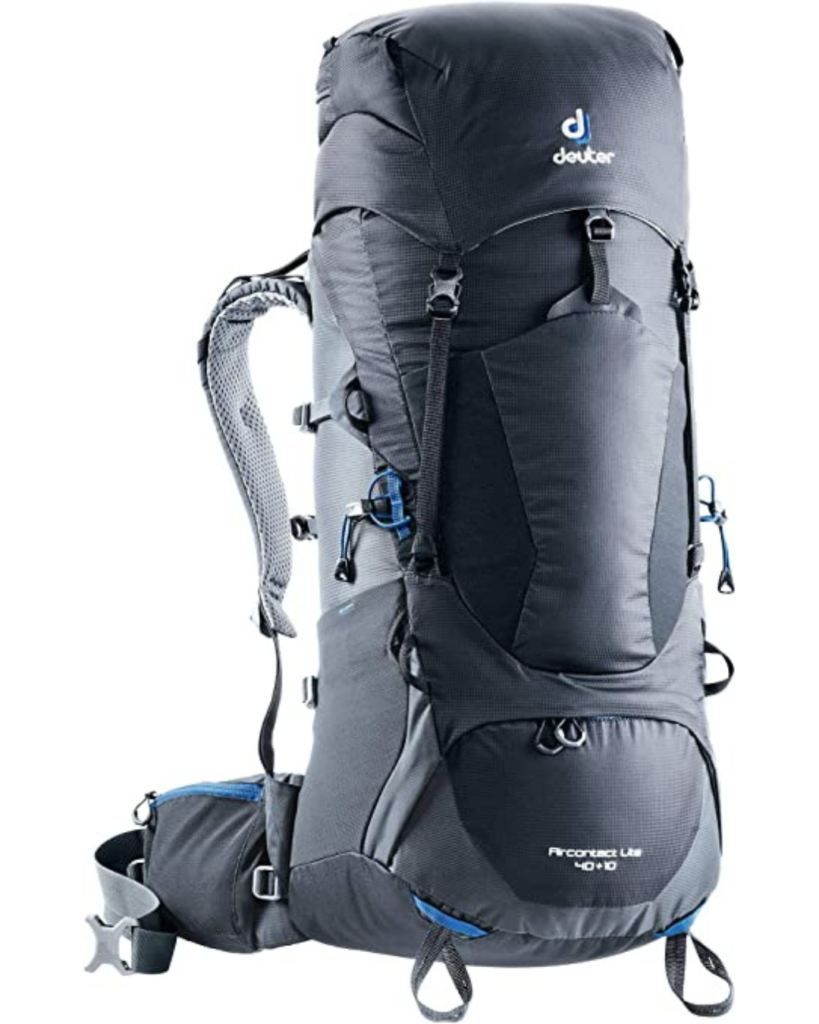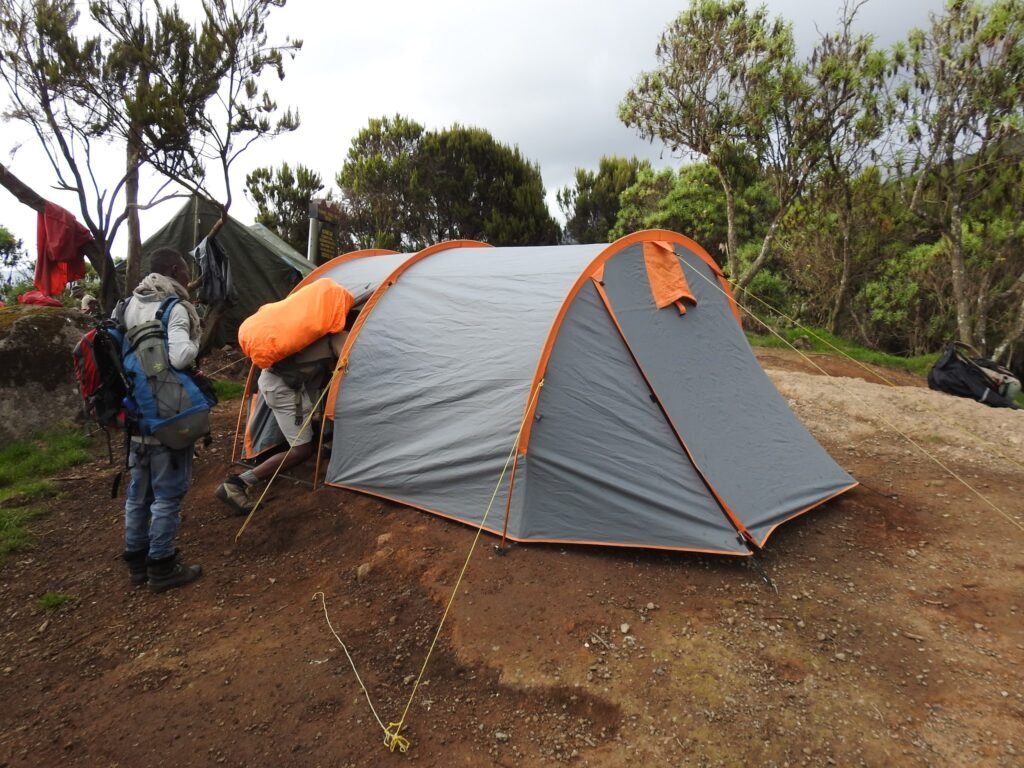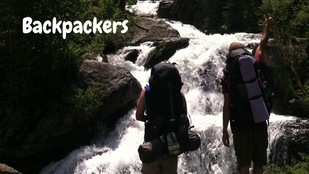Starting your first overnight trip? You can pack for a three-season backpacking trip with this helpful backpacking checklist.
Starting to explore the world of hiking? Count on us to lead the way. We can guide you through everything from putting together your kit to choosing a campsite to cook, our Backpacking 101 will teach you everything you need to know.
If you’re prepared, a backpacking trip can be the adventure of a lifetime. The easiest method to assess your gear before leaving is to use a backpacking checklist. Our practical list includes everything you’ll need for any length of time in the wilderness, from one night to a week. Time to start moving!
Backpack

You should bring a pack that is between 50 and 80 liters in size for three-season backpacking excursions that last a weekend or more. You can get by with a smaller pack if your journey is just an overnight one or you have an ultralight kit. When selecting a backpack, there are numerous factors to take into account, such as carrying capacity, features like sleeping bag compartments and ice axe fasteners, pockets, materials, and overall fit.
Shelter

Tents provide the ideal balance of livable area and safety, making them the most user-friendly solution. In warmer weather below the tree line, hammocks can be a comfortable option. However, they may take additional time for setup and tree selection, as well as additional gear like a tarp to ward off rain or an underquilt to ward off cold. Tarps by themselves are a lightweight and compact solution, but they don’t offer any bug protection and require some time and thought to properly pitch. Before leaving, make sure you count every stake and pole.
Sleep System

Traditional mummy bags provide more coverage than blankets while having a better warmth-to-weight ratio than rectangle sleeping bags. As long as you pack a beanie or detachable hood for warmth, quilts can help you save a lot of weight, but they can also be awkward at first. Every sleeping bag has a temperature rating that specifies the range that the bag is made to withstand. You can get away with a greater comfort rating in areas with warmer climates. Make sure your pad has the proper insulating R-value for your lowest anticipated temperature because your bag is only as good as its pad. (Three-season pads typically have an R-value of 2 to 5, and 5 or higher in the winter.)
Water Filtration and Storage

No matter the design, every filter or purifier will ultimately become clogged. Always carry the equipment needed to clean your filter. If you intend to use a UV purifier, remember to carry a mesh pre-filter for sediment if the mountain water isn’t completely pure. If there is a danger of freezing weather, store your filter in a leak-proof bag and tuck it away in your sleeping bag for the night since it becomes unsafe to use if it freezes.
Reusable Water Bottle
Water is the most crucial item you should pack for your hike. This must be emphasized. Dehydration is one of the most frequent problems that novice hikers experience. It can be challenging to estimate how much water you will need for your hike if you’re a newbie. Bring at least 0.5 liters of water for every hour you plan to hike, however, it can be more.
Get a few nice trekking water bottles, especially ones that fit into backpack pouches so you don’t have to hold them in your hands, and fill them with water instead of buying bottled water. Bottled water isn’t exactly good for the environment, and it eventually gets warm and tasteless. Additionally, you want to have water treatment equipment on hand so that in case you run out, you can treat any clean water that comes your way.
Stove and Cookware
For fast rehydrating food, sanitizing water, and preparing hot beverages, canister stoves are fantastic. For simpler cooking in the wilderness, use a stove with a wider burner head and a non-integrated pot. Because they are simpler to operate, canisters are frequently chosen by hikers, however liquid fuel stoves can be more effective in cold weather and at higher elevations and accept a variety of fuels.
Snacks and Meals
The amount of food you bring depends on your unique physiology, pace, and trail conditions, but for many people, 2,000 to 5,000 calories per day is a good range. You can lose weight by bringing calorie-dense foods like nut butter, cheese, and olive oil. If in doubt, bring more food than you anticipate needing.
Apparel
The adage “cotton kills” is well-known among hikers for a good reason: when wet, the material doesn’t insulate and retains moisture, creating the ideal environment for hypothermia. For best temperature control, only put on layers made of wool or synthetic materials. In cold or high-altitude settings, base layers and gloves can save your life, but they are overkill in warm, low-altitude climates. Even if rain isn’t predicted, pack enough rain gear, and never leave home without at least two extra pairs of socks (wet feet mean a miserable trip).
Hiking hats and sun protection
Even in the winter, hiking trips require the use of sunscreen. If proper sun protection measures are not performed, the effects of sunburn, parched lips and chafed skin may force you to postpone your upcoming hiking trip.
Always remember to bring additional supplies, wear hiking helmets and polarized sunglasses, apply lots of sunscreen before starting your journey, and, if feasible, dress warmly.
Apply lip balm, ideally one that has SPF, and don’t forget to do so. Consider investing in a hiking hat designed especially for ladies to shield you from the sun if you’re a woman.
Footwear
One of the most individualized decisions a hiker can make is selecting their hiking footwear. There are fits and options available for every hiker and trekking style. Mid-cut or high-top boots are a superior option for stability under big loads, rocky terrain, and improved longevity. You’ll move more quickly and breathe better with trail running shoes (one pound on your feet equals five pounds on your back). In general, lighter shoes may be more comfortable over long distances depending on how much weight you’re carrying. Due to their weight, breathability, and ease of water crossing, some trekkers choose to hike in sandals, but this comes with the risk of chilled feet and stubbed toes.
Your feet are your most valuable hiking assets because you’ll be doing a lot of walking, and your hiking shoes are your most essential piece of equipment. While not wholly horrible, some hikers walk in sneakers, which aren’t the best for novices, particularly if you’re going on a steep trip.
In the end, your preferences and the terrain you plan to hike on will determine the shoes you wear. However, investing in the right hiking boots is crucial. In order to avoid feeling restricted when wearing socks, look for a lightweight, robust shoe that fits well in your heels, has appropriate traction, and is loose enough at the toe.
Personal Hygiene
The environment in the wilderness will determine how you conduct business. The simplest case entails relocating 200 feet away from a water supply, route, or camping location, digging a six- to eight-inch deep hole, marking your place clearly, and properly cleansing your hands. A WAG bag might be necessary for some situations, such as deserts or tundra, or protected and well-known parks. Tampons are always a pack-out item, so keep that in mind.
Electronics

On a backpacking trip, the majority of hikers can get by with a tiny power bank to recharge their phones and headlamps. A solar charger is the finest (though sluggish) option for long journeys without resupply. Batteries (always lithium, never temperature-sensitive alkaloid) lose power faster as the temperature decreases, so keep them inside your sleeping bag at night. Here is more information on some of our preferred electronics for backcountry use.
A Headlamp or Torchlight

Going without a light source is one of the riskiest hiking errors you can make. Battery-powered or powerful headlamps or torches are necessary, especially if you intend to stay until it gets dark out.
Never mess about with your torch because you won’t be able to see in the dark without one, and becoming lost in the dark is not something to take lightly. Even if you only plan to hike for a few hours, bring a torch anyway because you never know what can happen.
Bring a sleeping bag, insect repellent, and a fire starter if you intend to trek or camp out overnight. If your torch runs on batteries, have extras on hand.
Navigation
Always have a topographic map on hand, and be familiar with how to use a compass. Although they are useful tools, GPS gadgets and smartphone apps occasionally experience power issues. Only a few more ounces and a fast course correction are needed for peace of mind.
Emergency and Repair
Simply grab a waterproof bag and rummage through your own medicine cabinet or pharmacy for a cheap alternative, or you can easily purchase a first aid kit that has everything you need (and more). One of the most versatile things you can carry, duct tape may be used for both gear repair and medical crises. If you’re sleeping on the unleveled ground, sleeping pad patch kits are very crucial.



[…] it’s a good idea to pack plenty of snacks, drinks, first aid kits, flashlights, maps, and hiking gear including good hiking boots and compasses in case of […]
[…] Read also: THE ULTIMATE BACKPACKING CHECKLIST FOR BEGINNERS TO PRO HIKERS […]
[…] and extra padding.Finally, consider how much space your backpacking chair will take up in your backpack. The smaller and more compact the chair, the better as it won’t take up too much space in your […]